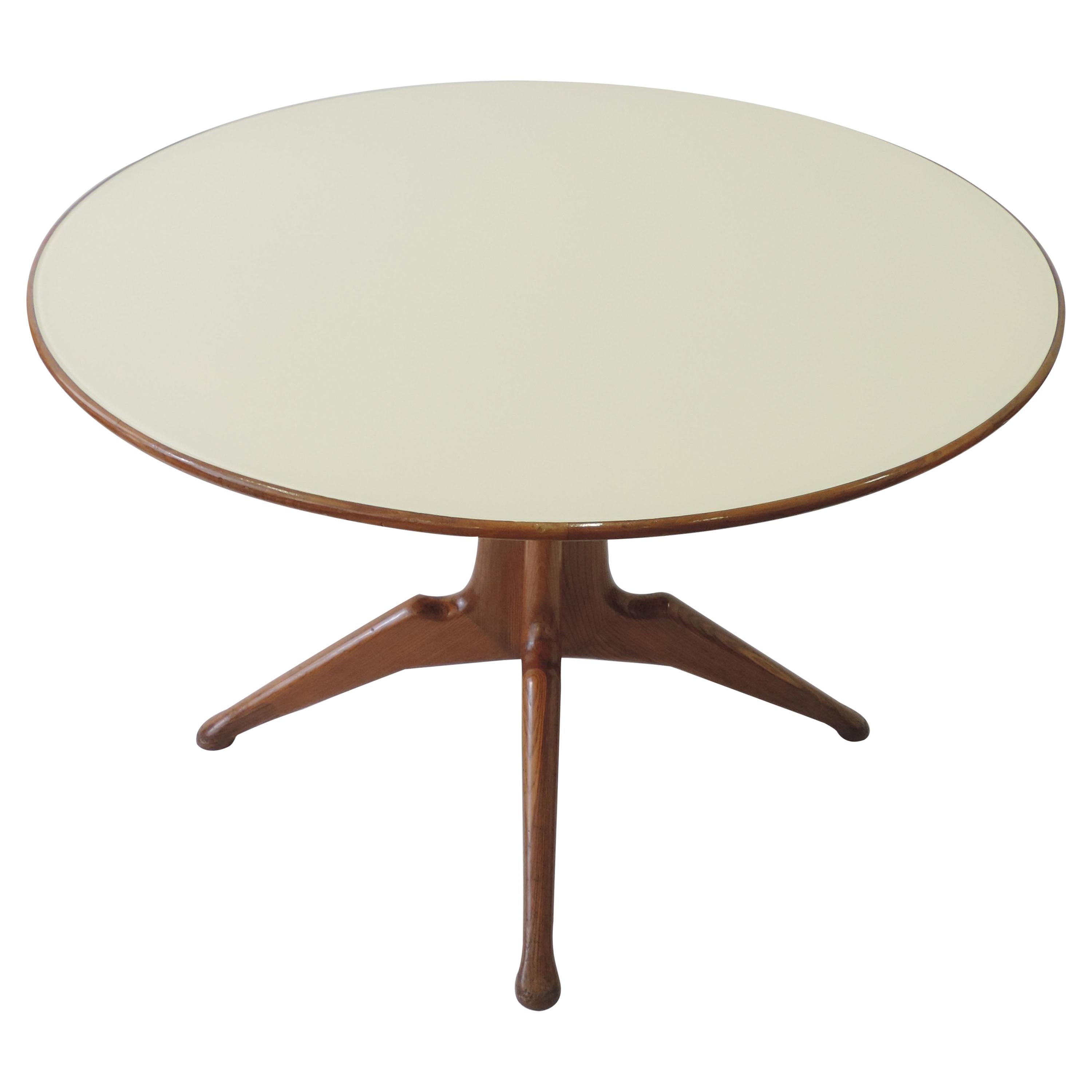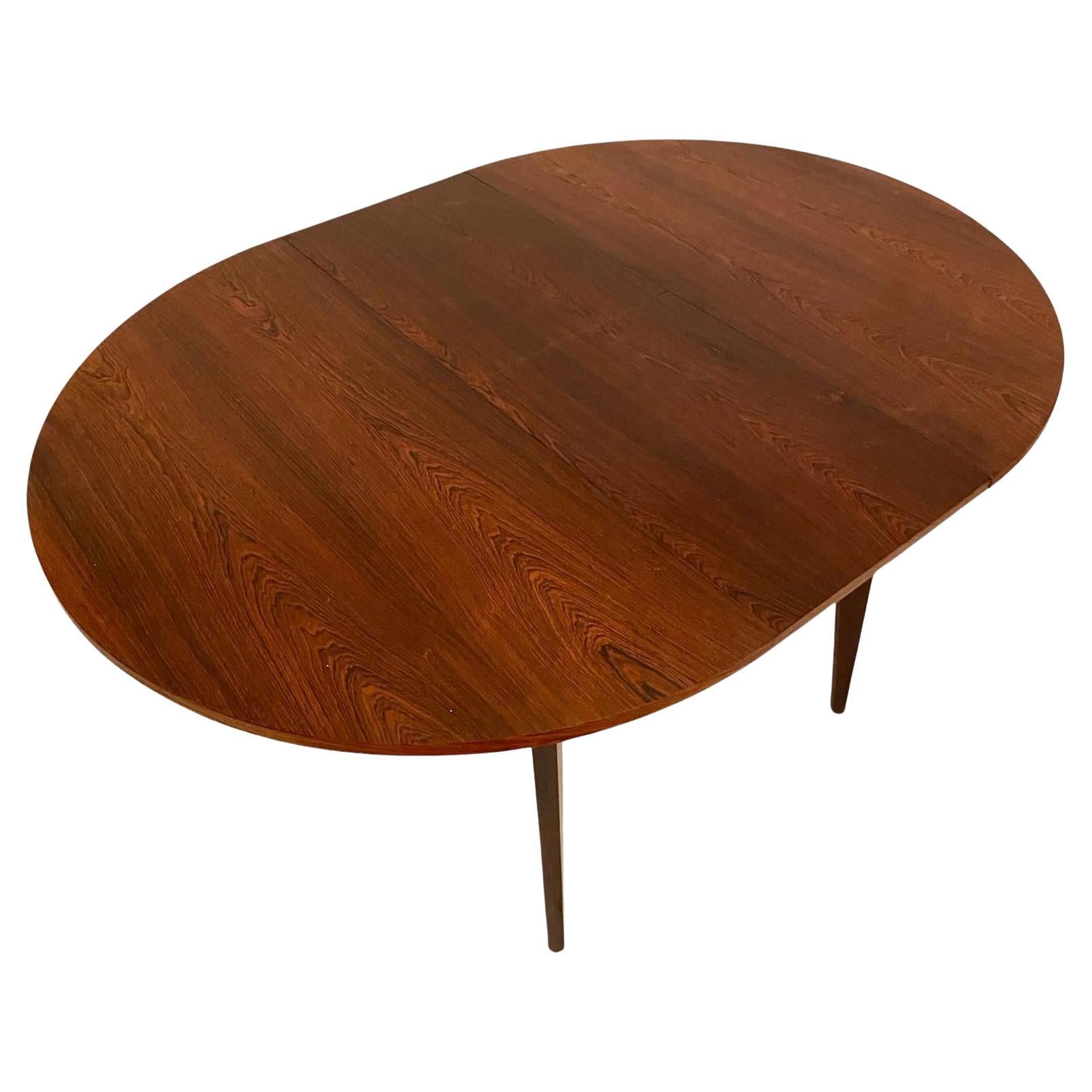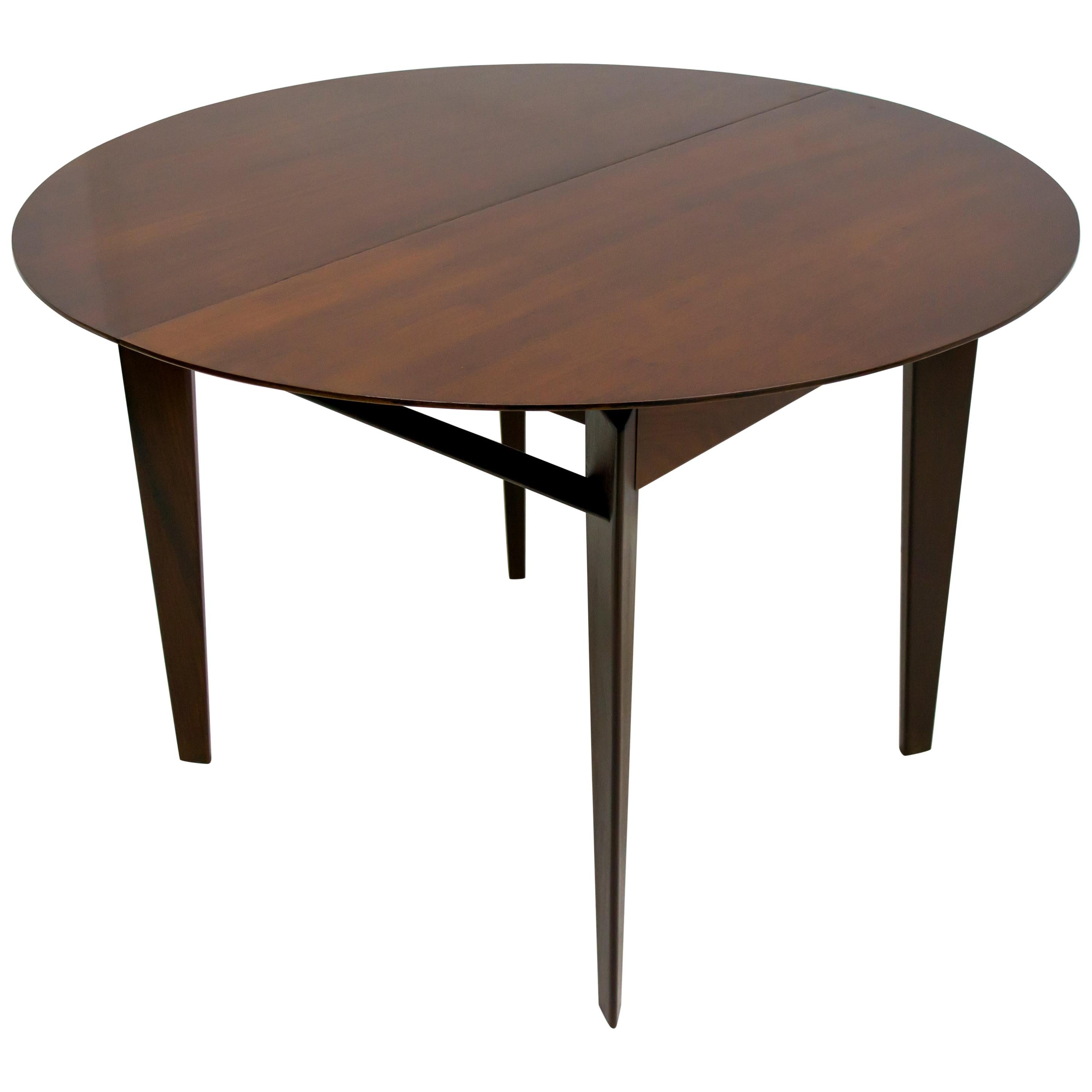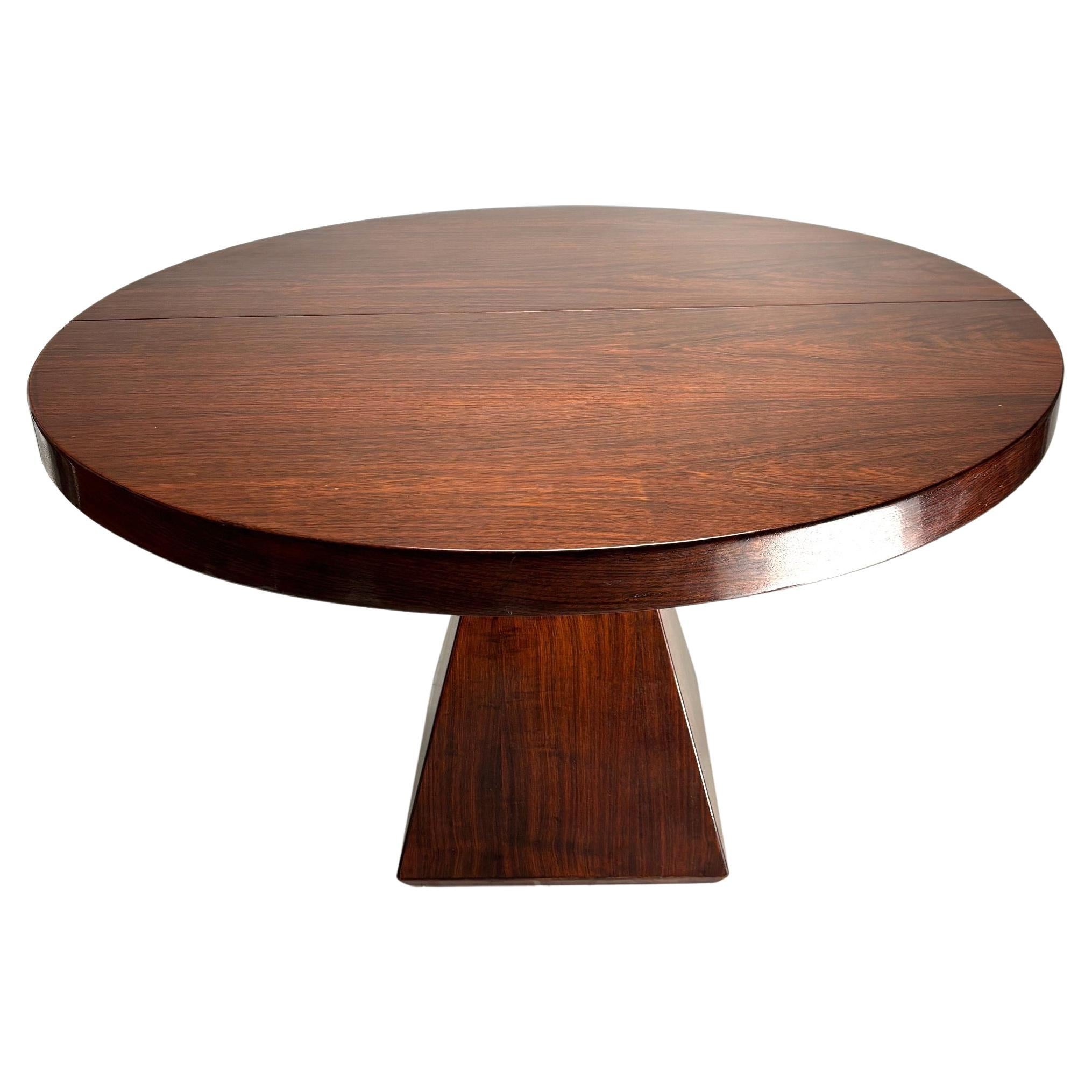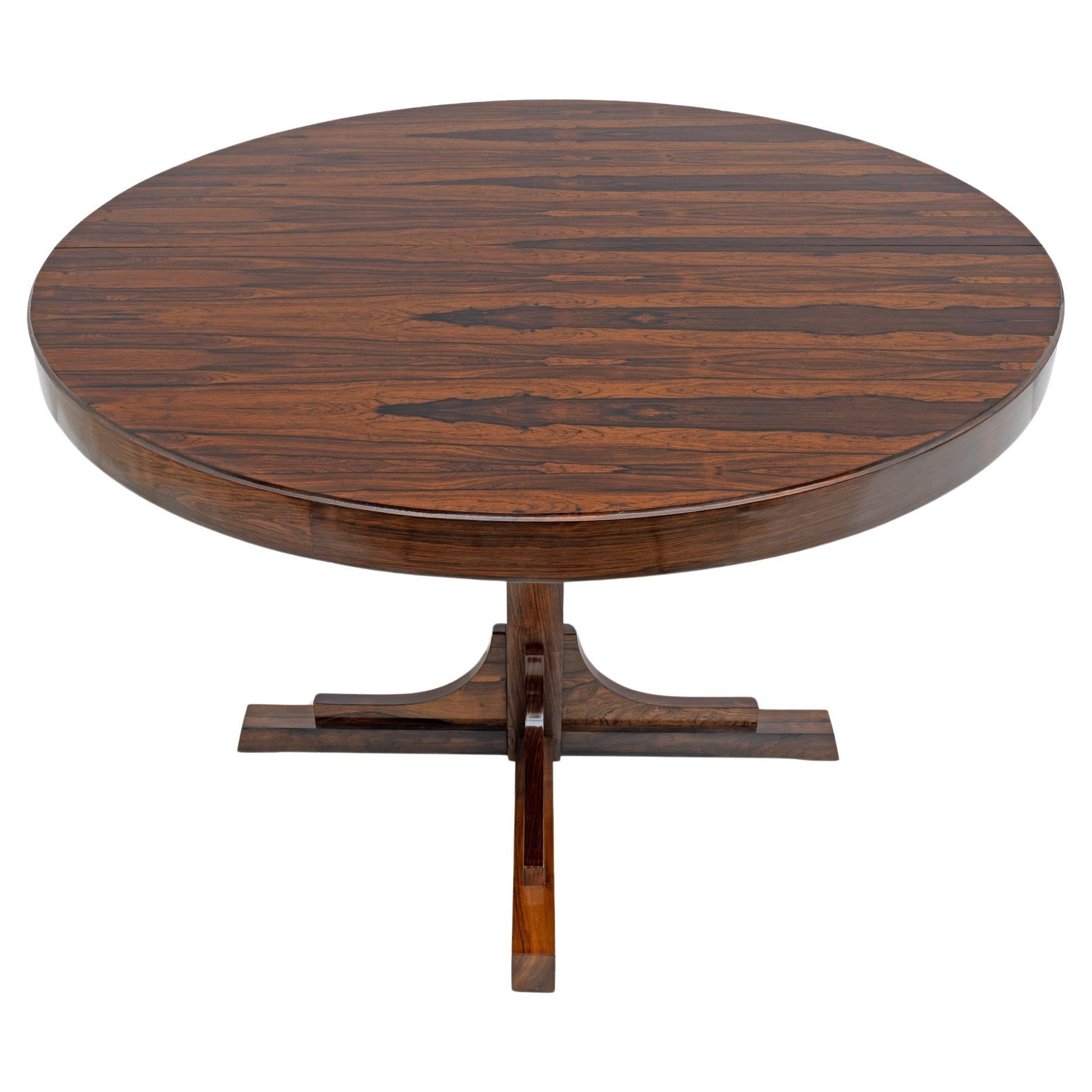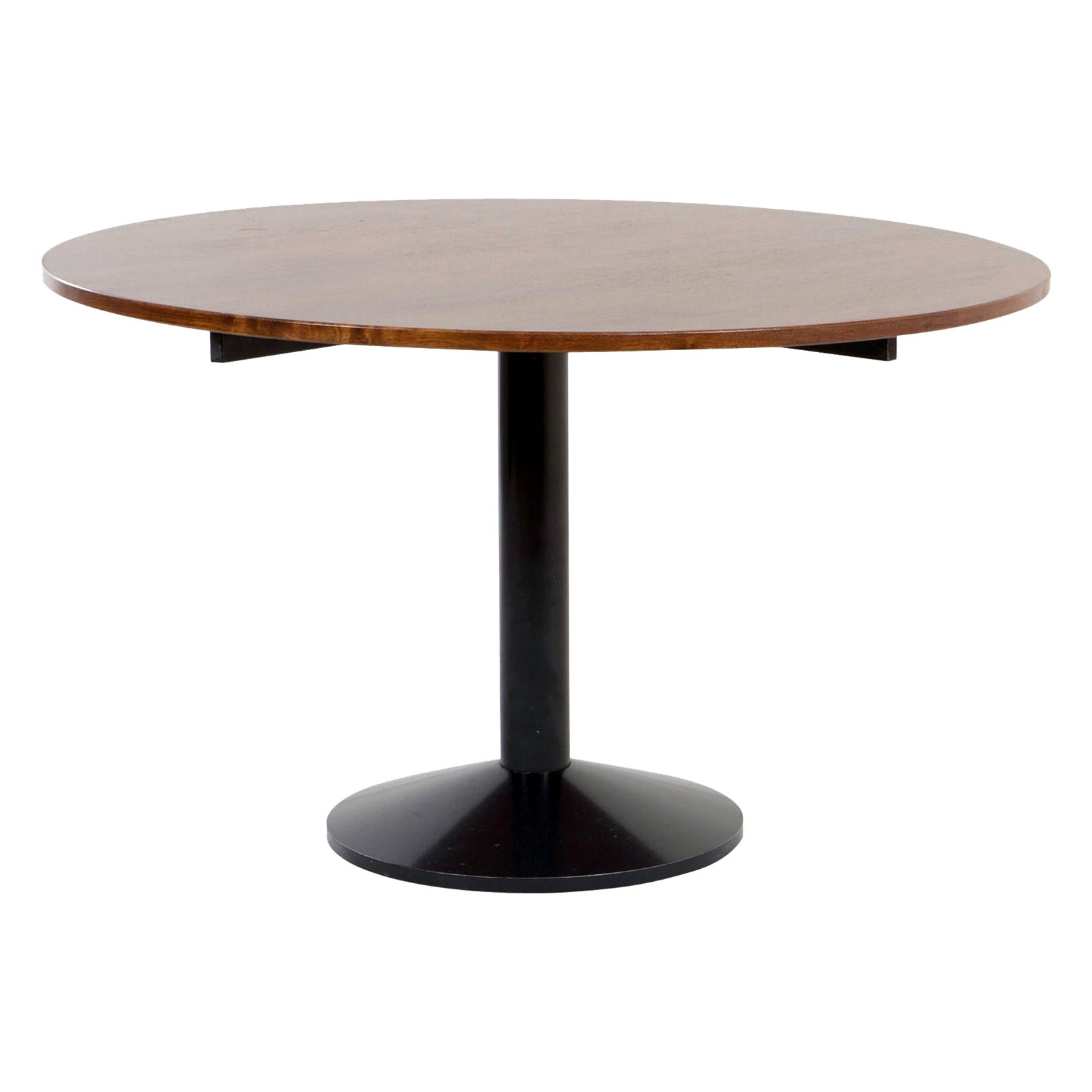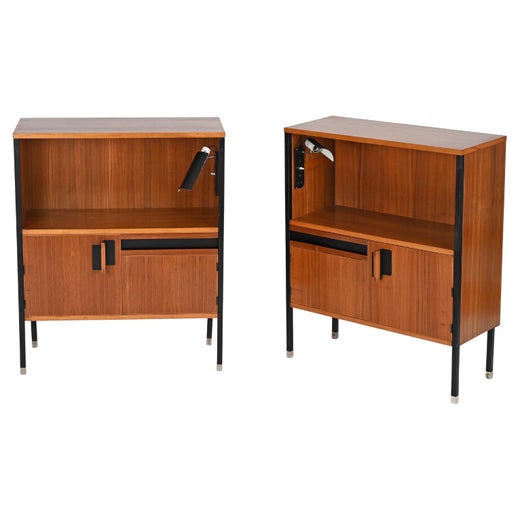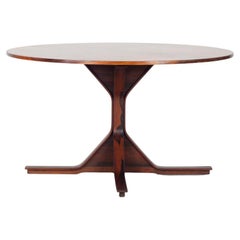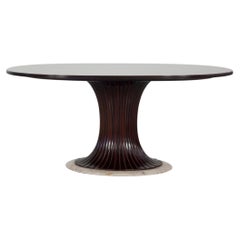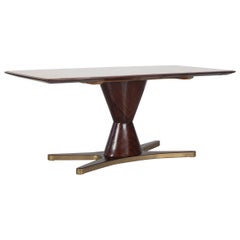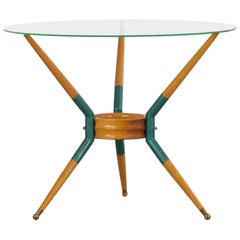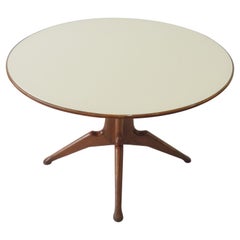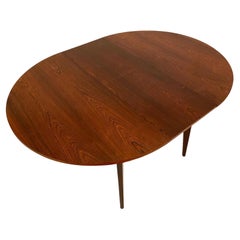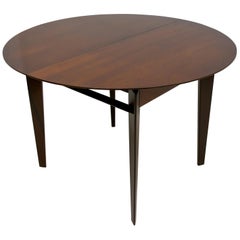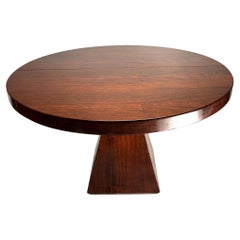Circular Table – Design by Ico Parisi, Manufactured by M.I.M Roma, Italy, 1960s
About the Item
- Creator:Ico Parisi (Designer),Mobili Italiani Moderni (MIM) (Maker)
- Dimensions:Height: 29.53 in (75 cm)Width: 47.25 in (120 cm)Depth: 23.63 in (60 cm)
- Style:Mid-Century Modern (Of the Period)
- Materials and Techniques:
- Place of Origin:
- Period:
- Date of Manufacture:1960
- Condition:Wear consistent with age and use.
- Seller Location:Wolfurt, AT
- Reference Number:Seller: ID 4591stDibs: LU298139672621
Ico Parisi
Domenico “Ico” Parisi was one half of a prolific postwar design duo he comprised with his wife, Luisa. Their furniture designs are known for running the stylistic gamut, with celebrated mid-century modern pieces ranging from elegantly skeletal — like dramatic ebonized dining chairs — to plush and shapely, like the iconic 1951 Egg chair, in a plethora of materials.
The son of an art teacher father, Ico Parisi was exposed to art at an early age. Born in 1916 in the Sicilian capital of Palermo, he and his family moved to Como in 1925. There, the young Parisi would begin to develop his interest in architecture and design. After earning a degree as a building inspector in 1936 and working as a civil engineer, Parisi took on an apprenticeship in the studio of Giuseppe Terragni, the modernist, fascist Italian architect, pioneer of the Rationalist movement and creator of the iconic Casa del Fascio.
While working for Terragni, Parisi crossed paths with such contemporary design talents as Lucio Fontana, Bruno Munari and Pietro Lingeri, though he briefly moved away from design and architecture to explore photography and film. His artistic work would soon be interrupted, however, by the outbreak of World War II, during which he served at the front before returning to Como in 1943. There, he resumed work as a designer and architect, founding two architecture groups: the Alta Quota and the Gruppo Como.
Through his creative circles, Parisi met Luisa Aiani, a former student of the prolific architect and furniture designer Gio Ponti, who was affiliated with the Alta Quota. They married in 1947 and founded the studio La Ruota — a cross between a design firm and an intellectual salon — in Como shortly thereafter. In 1950, Parisi finally completed his architectural schooling, studying under the nationalist architect Alberto Sartoris at the Athenaeum Architecture School in Lausanne, Switzerland. He and Aiani began several decades of sophisticated output, designing curved sofas upholstered in yellow velvet and armchairs with slender mahogany frames for enduring Italian manufacturers such as Cassina and others.
Much like Charles and Ray Eames in America, the Parisis worked as a team and relied on experimentation in style and material for many of their designs. Ico Parisi died in Como in 1996.
Find a collection of vintage Ico Parisi coffee tables, dining chairs and more on 1stDibs.
- ShippingRetrieving quote...Shipping from: Wolfurt, Austria
- Return Policy
More From This Seller
View AllVintage 1960s Italian Mid-Century Modern Dining Room Tables
Wood
Vintage 1950s Italian Mid-Century Modern Center Tables
Marble
Vintage 1950s Italian Mid-Century Modern Dining Room Tables
Brass
Vintage 1950s Italian Mid-Century Modern Tables
Brass, Metal
Mid-20th Century Italian Mid-Century Modern Dining Room Tables
Metal, Brass
Vintage 1960s Danish Mid-Century Modern Side Tables
Teak
You May Also Like
Vintage 1950s Italian Mid-Century Modern Tables
Glass, Wood
Vintage 1960s Italian Mid-Century Modern Dining Room Tables
Walnut
Vintage 1950s Italian Mid-Century Modern Dining Room Tables
Teak
Vintage 1970s Italian Mid-Century Modern Dining Room Tables
Wood
Vintage 1970s Italian Mid-Century Modern Dining Room Tables
Walnut
Vintage 1950s Italian Mid-Century Modern Tables
Metal
